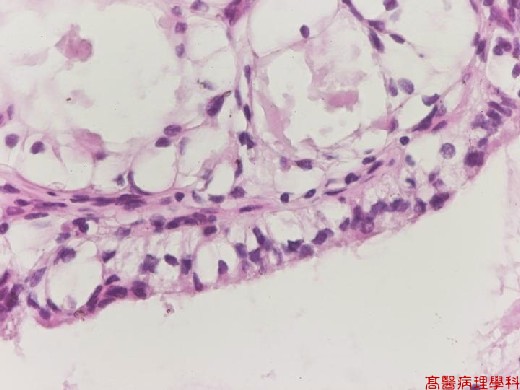-
Robbins Pathologic Basis of Disease, 6th ed. P.772.
|
|
【 Fig. 64-1 (LP)】The tumor consists of mucin-containing cysts mixed with sheets of squamoid cells.
|
|
【 Fig. 64-2 (LP)】Presence of squamous cells , mucus-secreting cells, and cells of intermediate type.
|
|
【 Fig. 64-3 (LP)】The mucus-secreting cells are cuboid or goblet like. May form cysts, single layer lining of the cyst.
|
|
【 Fig. 64-4 (LP)】Squamoid cells form solid masses or sheet.
|
|
【 Fig. 64-5 (HP)】Intermediate cells have squamoid features with small to large mucus-filled vacuoles (in the lower field ).
|
|
【 Fig. 64-6 (HP)】Intercellular bridge in squamoid cells.
|
|
【 Fig. 64-7 (HP)】Mucin-secreting cells have tall columnar shape and contains mucin in the cytoplasm.






